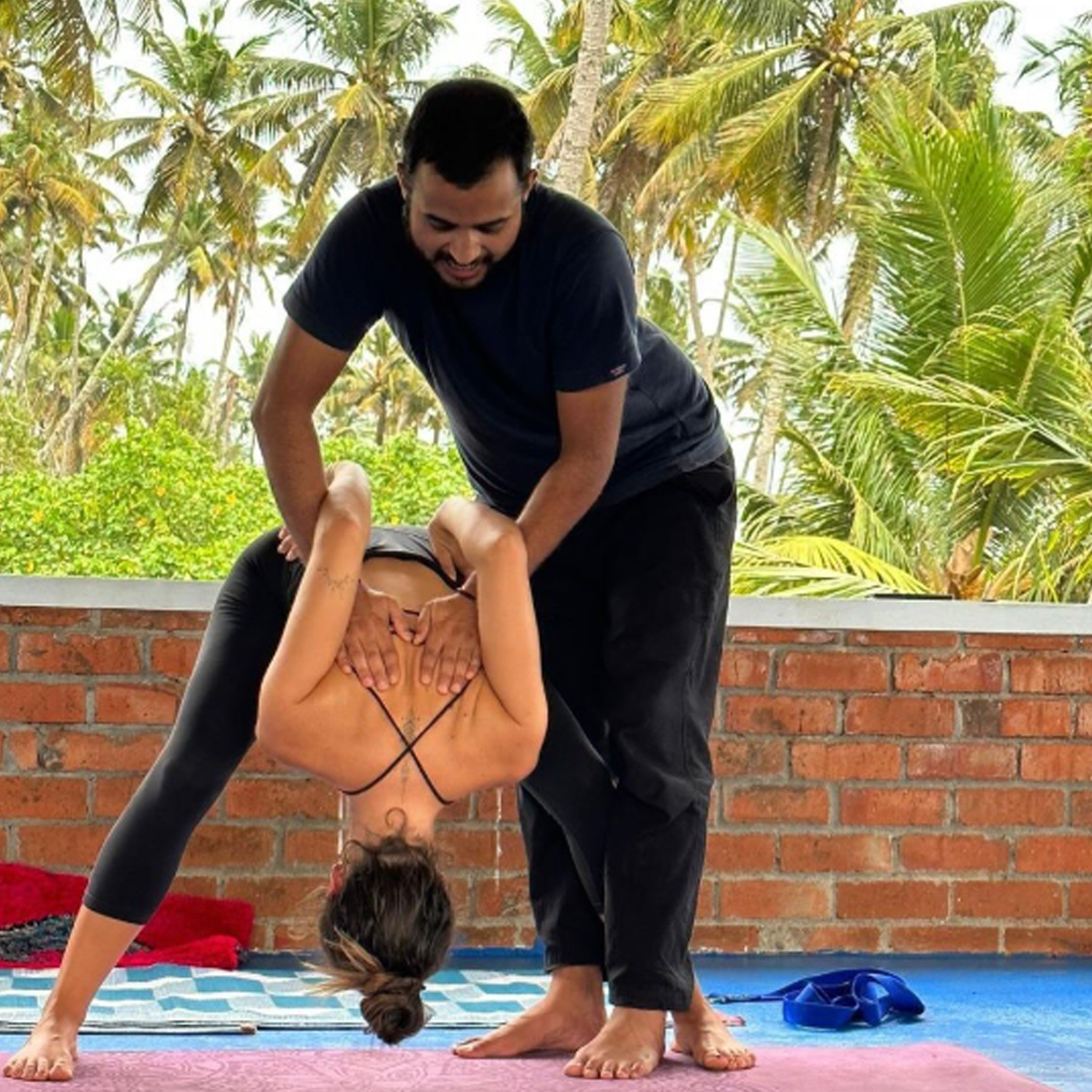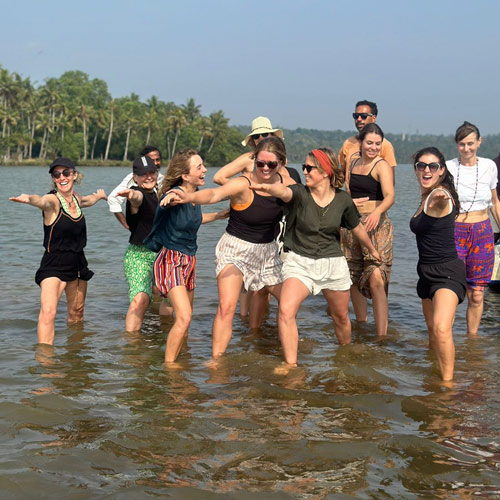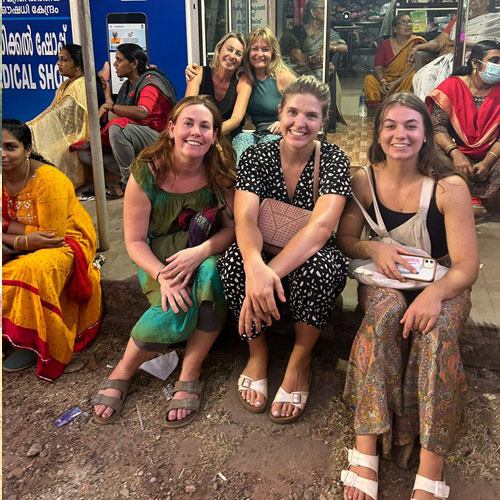There are numerous things that make teaching yoga a unique and fulfilling experience. You need to understand the various aspects of yoga deeply before you start sharing its wisdom to your students. Stepping on this journey of yoga teacher training allows you to learn from experienced educators, who provide invaluable guidance that goes beyond the training manuals.
Yoga teacher training is not just about having skills to teach yoga, it is also about discovering your own self and incorporating internal balance as well as grounding. When you pass the wisdom of yoga, you not only teach the benefits of asanas, pranayama, philosophy or meditation, but you also tend to change yourself.
During the journey of your yoga training, you grow physically, mentally, and emotionally. Therefore, you must have passion and undying love for yoga before you start teaching its different aspects to others. To guide you, this article is going to provide you with insights about how you can start teaching yoga.
Understanding the Basics

Before learning about the vast dynamics of yoga, it is essential to understand the basics and foundations of yoga. You must be familiar with the fundamentals of yoga asanas, philosophy, and traditions of yoga. Learning about the yogic philosophies from ancient texts like Patanjali Yoga Sutras, Bhagavad Geeta, and Upanishads are extremely important to understand the principles of yoga and connect with its deeper purposes.
Before beginning to teach, elevate your own yoga practice with the help of consistency and discipline. Regular personal practice lets you include the yogic learnings in your daily life, which will help you to make your instructions clear and resonate with your students. Practicing yoga daily refines your skills for asanas, breathing techniques, and meditation as well, that acts as a foundation for your teaching journey.
Enrolling in a Yoga Teacher Training (YTT) Program
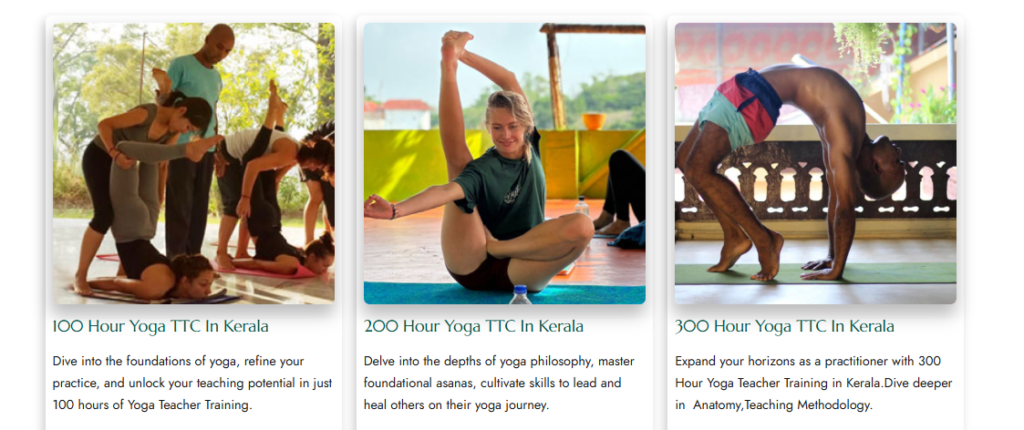
It is essential to choose the right yoga teacher training program for yourself in order to become a good yoga instructor. Taking guidance from the experts will help you delve deeper into the yogic world. Select the training program that aligns with your goals and reflects your vision. Consider factors such as destination, type of yoga style, level of certification, and the cultural impact of the program on your yoga journey.
The yoga teacher training program has a structured curriculum which includes different asanas, yogic philosophies, synchronized breathing techniques, deep meditation, teaching methodology, human anatomy, alignment and adjustment, and class sequencing. To become a certified yoga teacher, you must join the yoga TTC programs that are accredited by the Yoga Alliance, USA. It is a non-profit organization that sets international standards for all yoga activities. Once you graduate from the course, you can register under the organization in order to receive the RYS certificate and start teaching yoga in any corner of the world.
Building a Strong Foundation

For teaching yoga professionally, you need to have a strong foundation of its understanding. Mastering the asanas and learning the correct alignment is essential for teaching yoga with proper safety and knowledge. Have your basics clear about human anatomy and physiology so that you can address the bodily requirements of your students clearly.
You should also have your fundamentals clear about basic pranayama and meditation as it is going to be an important part of your yoga teaching career. Unless you are completely aware about yoga poses and how to get maximum benefits from them, you will not be able to share your yogic wisdom to the students properly.
Teaching Methodologies

Teaching yoga efficiently requires you to have proper communication skills and teaching style. This is where teaching methodologies come into play. Spreading the wisdom of yoga via teaching is more than just demonstrating poses, it is also about resonating with the students, understanding their body, and supporting them at every step. This methodology helps you to clearly convey your knowledge to the students and communicate with ease.
Partaking in the teaching methodology sessions during your yoga TTC program helps you to learn verbal cues, have immediate feedback, and have hands-on teaching practice under the guidance of expert instructors. You will learn to sequence classes according to the requirements of your students, that will make you an authentic yoga teacher.
Deepening Personal Practice
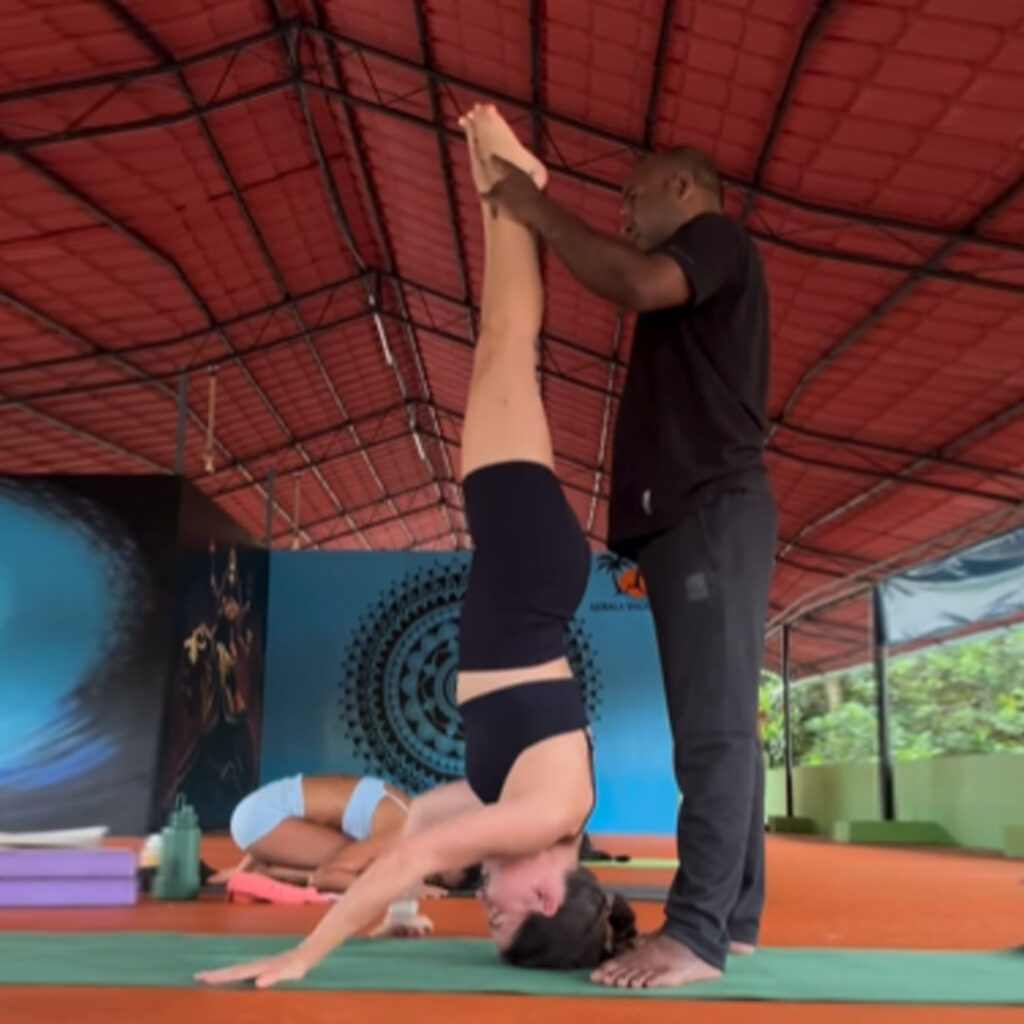
As a certified yoga instructor, you must put your personal practice as a priority. This will elevate your own understanding and help you refine your teaching skills. When you deepen your personal yoga practice, you reconnect with yourself and enhance your relationship with yoga. It is important to keep exploring new yoga styles and upgrading yourself so that you become an inspirational and reputed yoga instructor amongst students.
Broadening your knowledge with different yoga styles like Hatha, Ashtanga, Yin, or Vinyasa you can understand various perspectives of life, which will help you to resonate deeply with your students of different backgrounds. While you explore other styles, make sure that you are deeply grounded and are aware of the foundational principles and ethics of yoga.
Gaining Teaching Experience

Ensure to participate in proper yoga programs that offer hands-on teaching practice sessions and provide a supportive environment for you to refine your skills. You can also start small by offering your teachings in local studios or just to your family and friends in order to gain experience about how to handle a yoga class efficiently.
While conducting these classes, make sure that you get proper feedback and advice that will help you evolve better. Encourage constructive feedback and use these inputs to constantly improve your teaching skills. Once you have gained enough experience, you can reach out to yoga schools or start your own online classes to teach yoga professionally.
Embracing the Yoga Community
To keep learning and adapt to new perspectives of life, you should be a part of yoga communities. The yoga bonds and communities allow you to practice in a supportive environment and have numerous opportunities for the future. Attend the local yoga retreats or meetups and connect with fellow yoga enthusiasts to build meaningful bonds.
The best way to keep evolving your yogic knowledge is by attending workshops and connecting with the experienced yoga instructors available in those workshops. These communities help you to stay motivated and committed towards yoga. As yoga practices are getting immensely popular at every corner of the world, you can connect with individuals of different backgrounds with the help of yoga and get familiar with their cultures and traditions.
Incorporating the Art of Breathing

Learning synchronized breathing and its significance is extremely essential in yoga. Prana i.e breath is the center of every yogic practice and helps in bridging your mind, body, and soul. Therefore, when you learn about pranayam, you get insights about various techniques of breathing that help you to unwind, relax, and rejuvenate.
Pranayama improves blood circulation and keeps your body away from other chronic diseases. Understanding the art of breathing along with other yoga practices will make you an efficient teacher. Teach the breath exercises to your students and help them to nurture their physical, mental, and emotional health with ease.
Designing you Class around your Students
It is essential to be inclusive while teaching yoga to your students. Design your yoga sessions according to the needs and requirements of your students so that your teaching resonates completely with them. As a yoga teacher, it is your responsibility to make sure every individual is engaging in your yoga classes and getting the maximum benefits.
But what exactly does inclusiveness in yoga classes mean? It means that your teachings are in such a way that your students learn yoga and its principles faster. Make your sessions fun, exciting, and full of interesting stories so that it has a long lasting impact on your students. Ensure that you create a supportive and welcoming environment for individuals of every background.
Engaging in Effortless Communication
Communication is the most important aspect to understand while teaching yoga professionally. How you communicate with your class reflects your own connection with them. Using clear and concise language in order to teach any yoga pose. Ensure that you have created a comfortable and judgement-free space for your students so that they are not hesitant in sharing their requirements or needs. This will also help them to explore more in their practices and understand every detail with utmost sincerity.
Committing Fully to your Own Practice
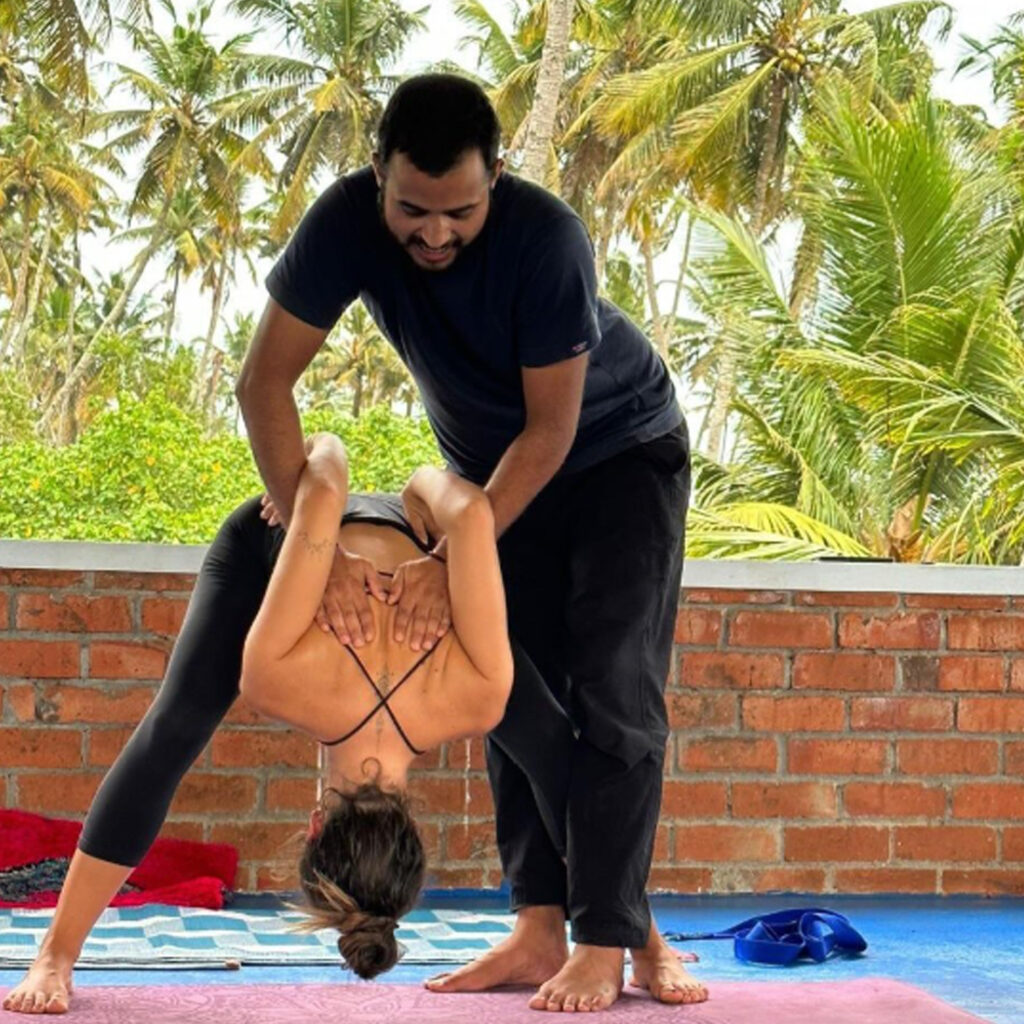
Your dedication and discipline to your personal yoga practices will set an example for your students and inspire them for the same. Demonstrate them how yoga is a lifelong journey of self-discovery, enlightenment, and learning so that they can learn from it. It is always said that students do what you do, not what you ask them to do. So whenever you are taking a yoga session, make sure you teach them to be committed and dedicated to these mindful practices.
Always Keep Learning and Continue to Evolve
Learning and evolving hand-in-hand is going to be two crucial sides of your life if you are deciding to become a professional yoga instructor. Participate regularly in the yoga workshops, retreats, and community programs to constantly elevate your practices. This will help you to stay up-to-date with the global wellness trends and new perspectives. The most important thing before everything else is to have a passionate mindset for practicing yoga daily. You must commit and have curiosity to explore the yogic universe all the time.
Obtaining Certification
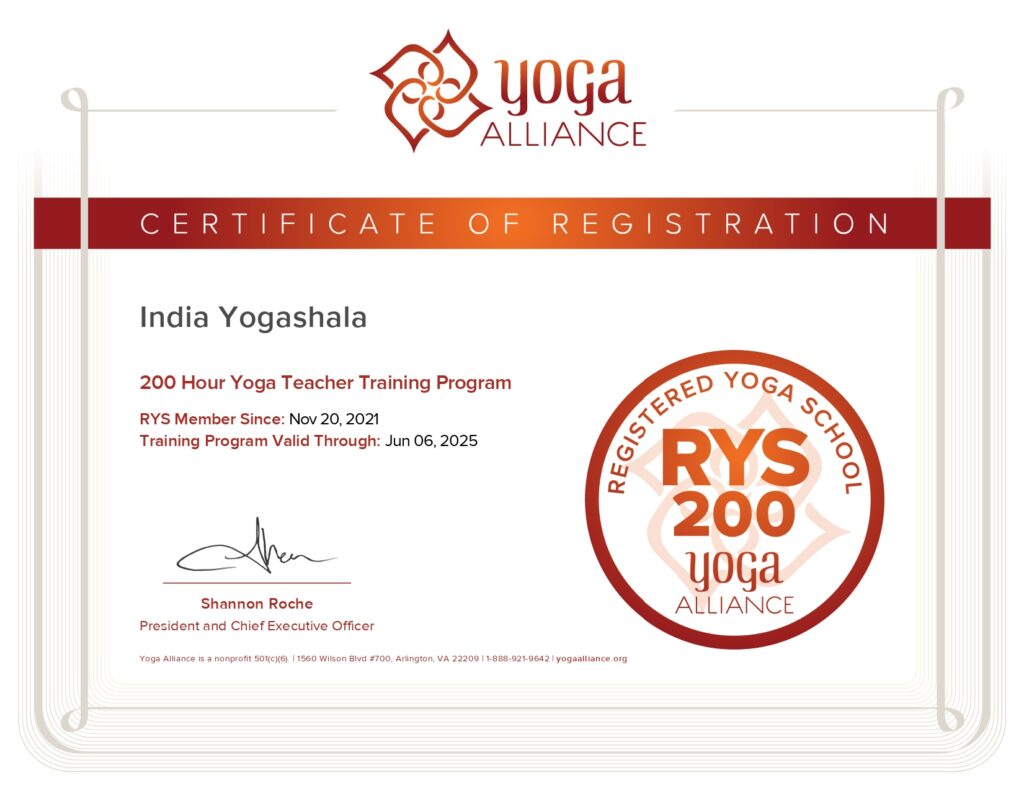
Your yoga teaching career is not much valid without getting your certification. After you graduate from your certified yoga program, register yourself for the RYT certification. This will make sure that your skills have met the global standards set by the Yoga Alliance, USA. The certification increases your credibility as a yoga teacher and opens up ample opportunities for your professional career. Though it is not mandatory to get the certification, you must obtain it in order to verify your hardwork and practice.
Setting Up a Yoga Business
If you are seeking to build a like-minded community for yoga and wellness, then setting up your own business is the best way to do that. Create a brand that reflects your yogic values to others and is unique so that it stands out amongst other yoga businesses in the market. You can start this by establishing your social media presence. Define your expertise, set your target audience, and connect with people who share similar visions and goals as you. For making your business venture a successful one, you also need to have a good marketing strategy. Use digital marketing and community outreach together in order to build a strong foundation for your yoga business.
Conclusion
From learning the foundations of yoga to enrolling yourself in a teacher training course, the journey of becoming a certified yoga teacher is no doubt an enriching and fulfilling experience. You must stay consistent and keep learning in order to evolve, while nurturing your own overall wellness. Teaching yoga can provide you ample opportunities to transform your career and can also convert your entrepreneurial dreams into reality.


